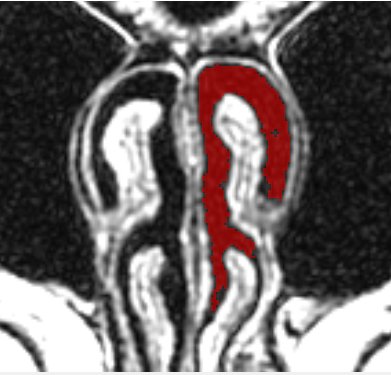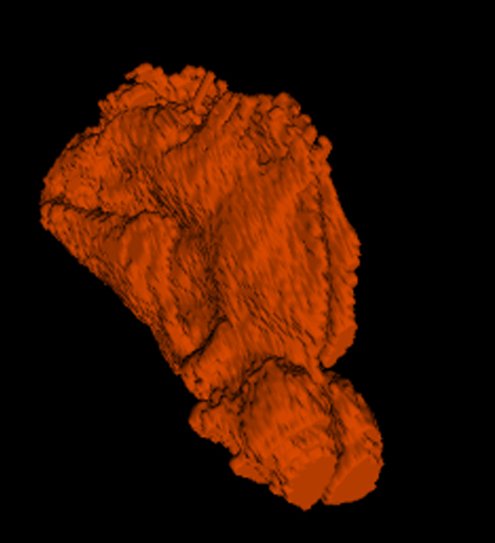A 3D medical image segmentation system for MRI modelling of the nasal passages
Eddie Edwards

| 
|
| MRI of the nasal passage
| A rendering of the 3D sinus after segmentation
|
Goal
To build a user friendly system for identifying anatomical
features in medical images. The user should be able to take
advantage of a number of semi-automated algorithms and manual
techniques to segment general 3D structures, but also to tackle
the specific problem of extracting the nasal sinus from MRI.
The extracted model of the nasal passage can be used to model air
flow in a number of potential clinical applications, including
decongestant effectiveness, sleep apnoea and general understanding
of the breathing process. Throughout the project, an ENT
clinician and/or engineer from the aeronautics lab will be treated
as "the users" and they will provide non-technical specifications
of what they require and assess prototypes of the system. The
overall aim will be to make a system that is useful to the
team. There will be at least 3 meetings with the users throughout
the project development. A supplementary goal will be greater
automation of the segmentation process.
Description
The Insight Toolkit (ITK) is a software
system for segmentation and registration of medical images. It
provides a library of C++ classes that implement several
state-of-the-art segmentation algorithms. Though there are a
number of example applications that are available with ITK, most
of these either work on 2D images or are completely automated and
do not allow user interaction. An exception is ITKSnap, which should be seen as
a model for the package that will be developed from this project.
Segmentation of anatomical structures from 3D medical images
generally requires manual delineation or other interaction in
regions where the object boundary is not clear.
The principal aim of this project is to produce a user interface
for ITK that combines the power of some of the automated
techniques with the flexibility of manual intervention in the
segmentation process.
There will be a number of aspects to this project. Some
thought will need to go into the GUI design. The ability to
visualise and navigate through a 3D dataset will be an early
requirement, followed by manual delineation of points, lines
and/or regions on this view. These features will then be input via
the GUI to selected automated algorithms, whose parameters can
also be adjusted.
Platform
Part of the process of the group project will involve deciding on
a platform the system. ITK (and VTK) are implemented in C++, so
this is an obvious choice. However, there are also bindings for
TCL, Java and Python, so any of these could be used instead. There
are installations of VTK and ITK available in DoC for linux, but
both libraries can be installed under Windows. There are a number
of widget sets (such as Qt or
FLTK ) that can be used, but if
implemented under Windows it may also be possible to use MFC. An
early task for the group will be to decide upon a platform
yourselves.
Possible division of work
There are a number of ways that the work can be divided. As a
rough guide the following may be appropriate:
- GUI design and implementation for: file load and save,
creation of viewing windows, passing of events such as mouse
clicks in the display window and so on.
- Interaction and display of 3D voxel images - relating 3D mm
coordinates to screen pixels, display with correct scaling
etc. Combined display of original image and segmentation result.
- Interface to ITK libraries - ensure that the correct
parameters are set for each algorithm implemented, ensuring a
common format for passing and returning of images.
- create popup or similar GUI elements for setting any such
parameters, perhaps achieven in an object-oriented,
standardised manner.
- Resulting segmentation display using VTK (see below).
Supplementary goals
It is hoped that the project will progress quickly in the early
stages, especially as there are a number of example applications
that can be built upon. Some sugested further developments that
would make the system more useful might include:
- Orthogonal image viewing and interaction
- 3D visualisation of results (using the Visualization Toolkit
- VTK) and either surface or
volume rendering or both
- Incorporation of 3D algorithms from ITK.
- Automated initialisation of the segmentation using atlas registration.
Eddie Edwards
Last modified: Wed Nov 28 00:55:26 GMT 2012



